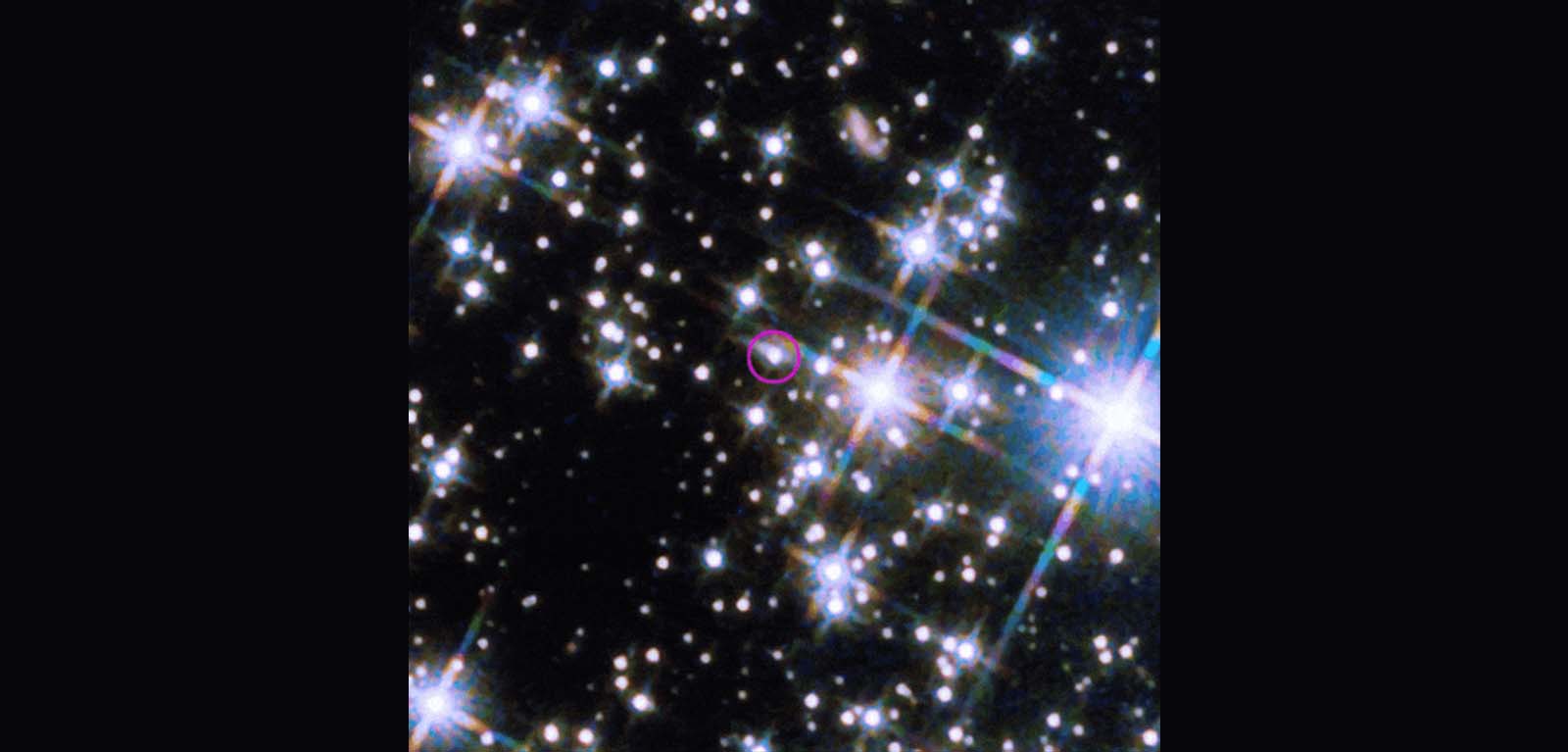Queen's scientists explore mystery of the brightest burst of energy ever discovered
Scientists at Queen’s University Belfast have made an exciting discovery – they’ve spotted what looks like a supernova in the afterglow of a dazzling gamma ray burst, located an astonishing two billion light years away in a distant galaxy.

Working with an international team of researchers, the Queen’s experts have identified a deviation in the light curve which they suggest may be a supernova. However, more research is needed to confirm this.
The adventure began on 9 October last year when a pulse of intense radiation swept through the solar system. It was so exceptional that astronomers quickly dubbed it the BOAT – the brightest of all time.
The source was a gamma-ray burst (GRB), the most powerful class of explosions in the universe.
The burst triggered detectors on numerous spacecraft, and observatories around the globe began investigations. After combing through all mountains of data, NASA this week announced that the GRB was so bright that events like this may occur just once every 10,000 years.
Like astronomers all over the world, the Queen’s scientists sprung into action after the initial discovery of the GRB. PhD student Michael Fulton from the School of Mathematics and Physics at Queen’s led the research project and was supported by Professor Stephen Smartt.
They began working with experts at Oxford University’s high energy Astrophysics teams and were assisted by an international team through the University of Hawaii.
The team observed the GRB extensively over 59 days using a telescope which is located more than 10,000 ft above sea level at the Haleakala Observatory in Hawaii – the Panoramic Survey Telescope and Rapid Response System (Pan-STARRS).
Combining this new data with data collected by colleagues from all over the world, the scientists were able to produce a detailed light curve of the gamma ray burst afterglow and they believe there may be a weak and subtle signature of supernova in the data.
PhD student Michael Fulton says the discovery is very unique: “There are dust clouds in the way that block much of the light emitted from the gamma ray burst (GRB). What makes our data unique is that it was observed in infra-red light and is less affected by dust extinction. This allowed us to observe the GRB much more clearly.”
Scientists have known about GRBs since the 1970s and since 1998 they are thought to have been produced by supernovae - the death of a massive star.
The signature of a supernova is usually spotted as the gamma ray burst fades but in the October 2022 discovery, it has been difficult to detect as it was so bright and there was so much dust.
The data collated by the Queen’s-led team suggests a deviation from what scientists would expect as the afterglow fades and they are attributing this to an emerging supernova.
Fulton adds: “I worked carefully to calibrate all the data and make accurate measurements of the brightness of the GRB over a period of 59 days from all the telescopes we used. The afterglow of the GRB is very bright and as it faded slowly everyone was looking for a signal in the data to indicate a supernova explosion has occurred at the same time.
“This is what we expected, given the history of gamma ray burst physics since the 1990s. If we make some assumptions on how the afterglow should fade, based on previous knowledge of these things, then there is a signal of another component in our data. This could be the supernova, but other groups have suggested we don’t fully understand this gamma ray bust. It will be interesting to combine all data now to see if this claim holds up.”
Professor Stephen Smartt comments: “This gamma-ray burst is extraordinary, extremely energetic, and although it’s two billion light years away, that’s pretty nearby for one of these things.
“The search for the associated supernova has been difficult because of the direction through the Galaxy and how bright the GRB is. Only one other group is convinced they see a signal of the supernova. But we have quite a unique data set which is well calibrated and carefully measured. We do see a deviation that looks like a supernova, but we will need to check this with more data when the sky position becomes visible again.”
The research findings have been published in the journal Astrophysical Journal Letters. Read the Journal’s Focus Issue on GRB 221009A for further information on the event.
Media
For media inquiries, please contact emma.gallagher@qub.ac.uk